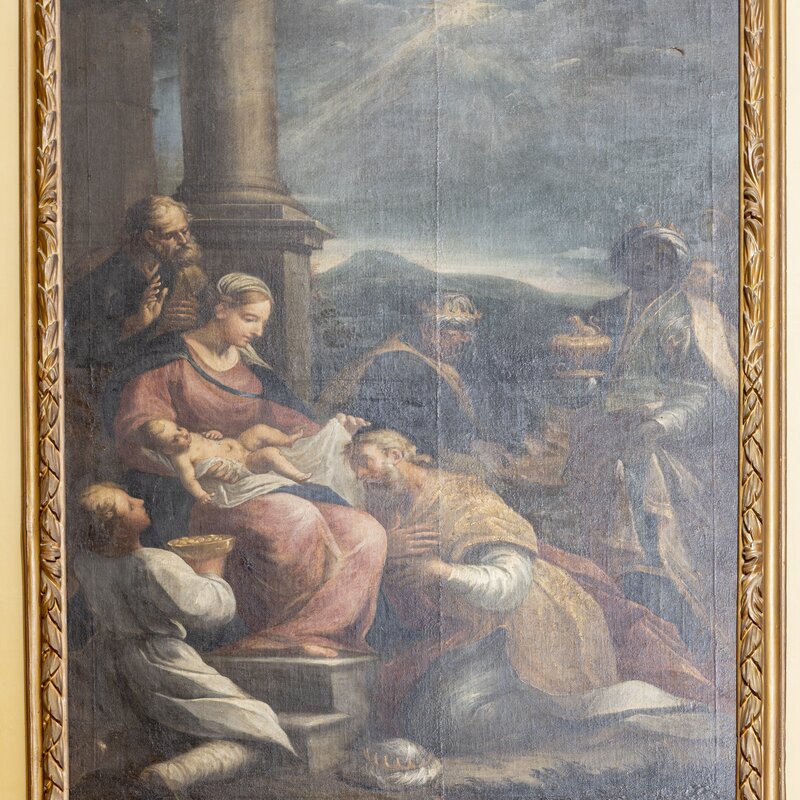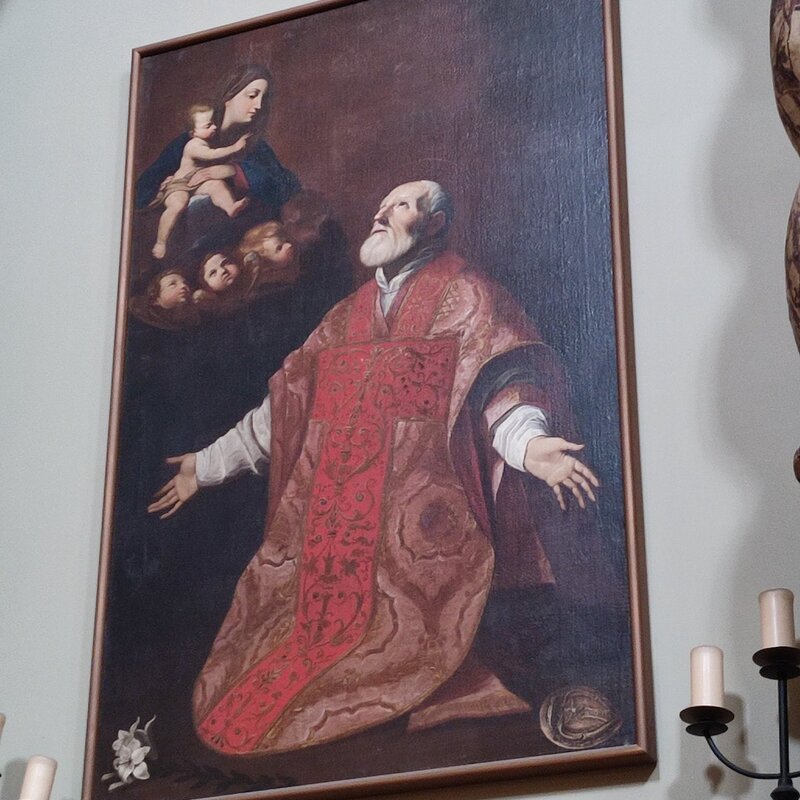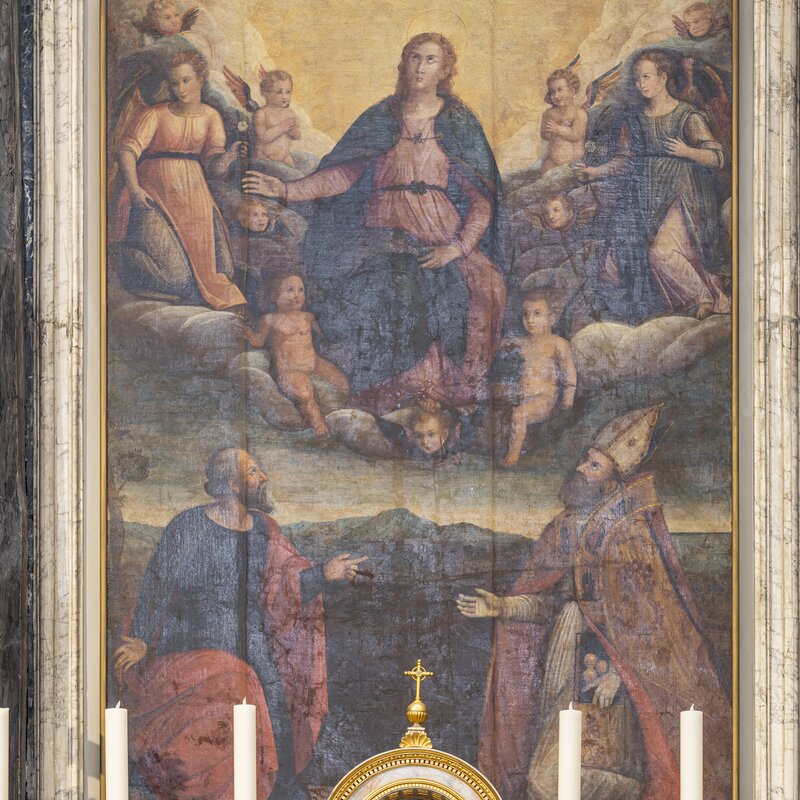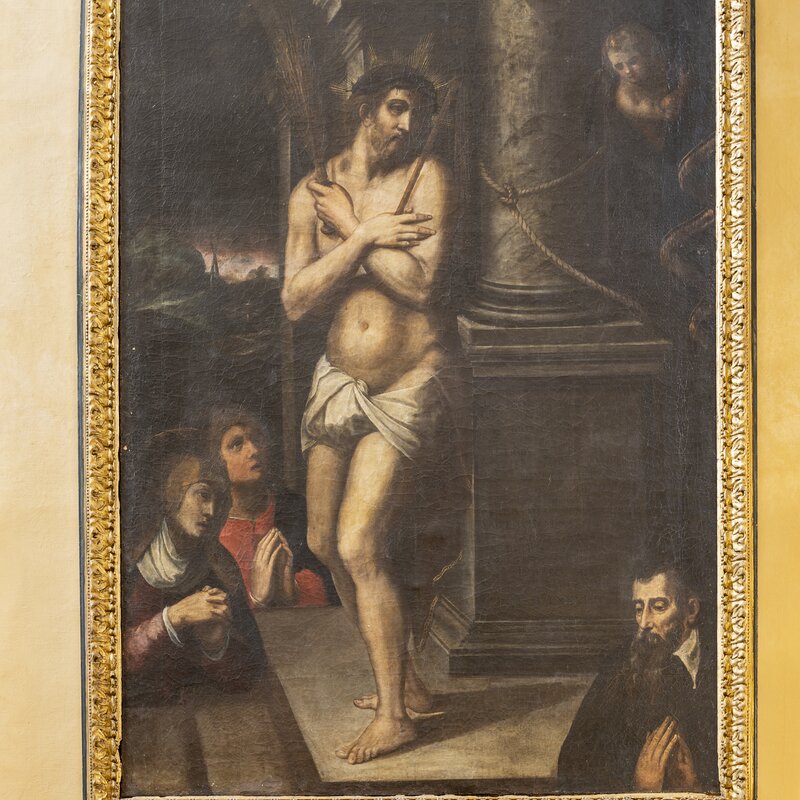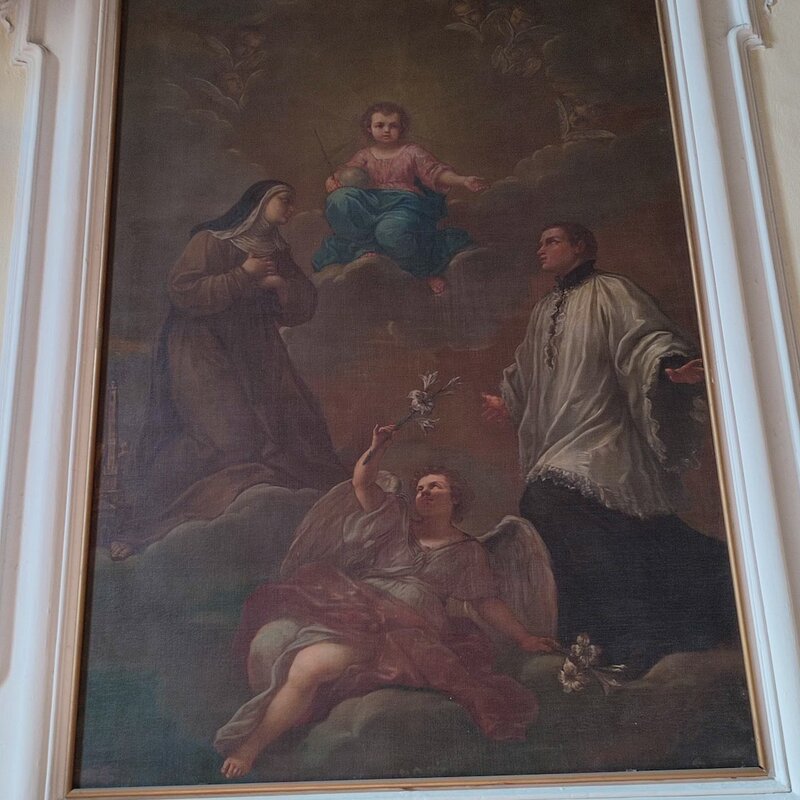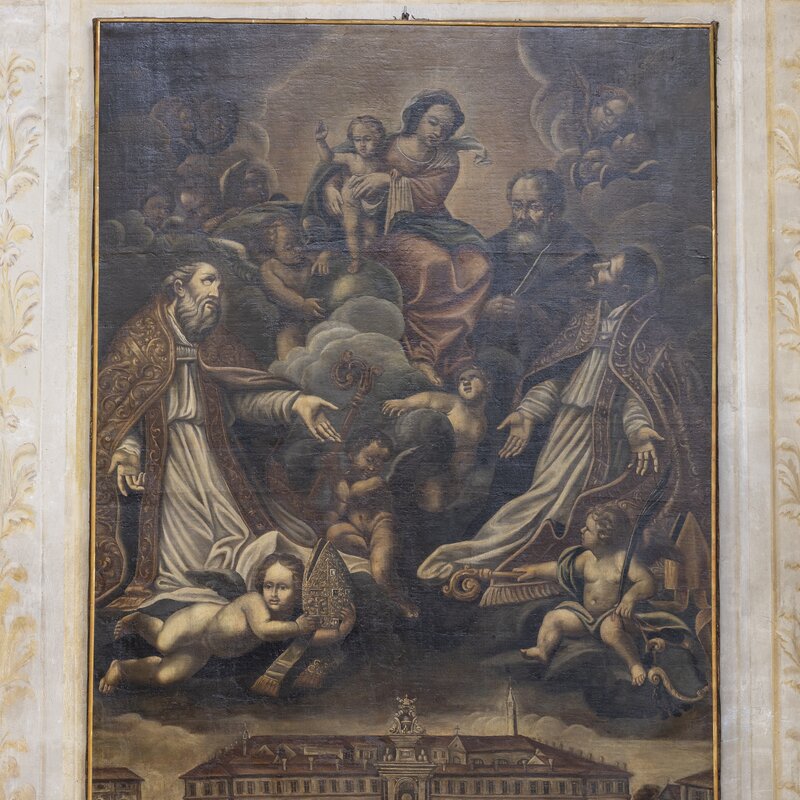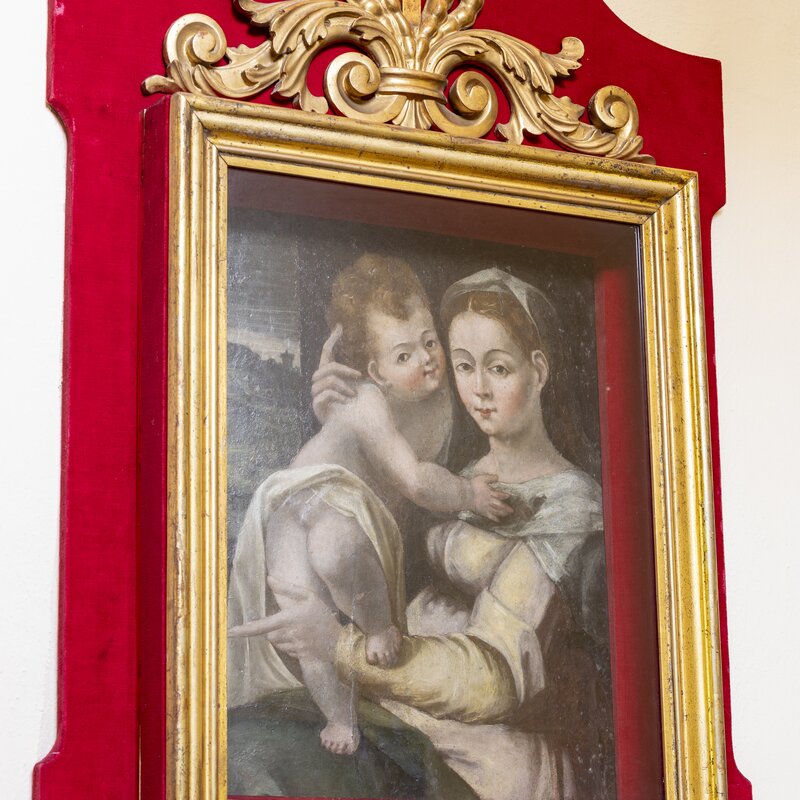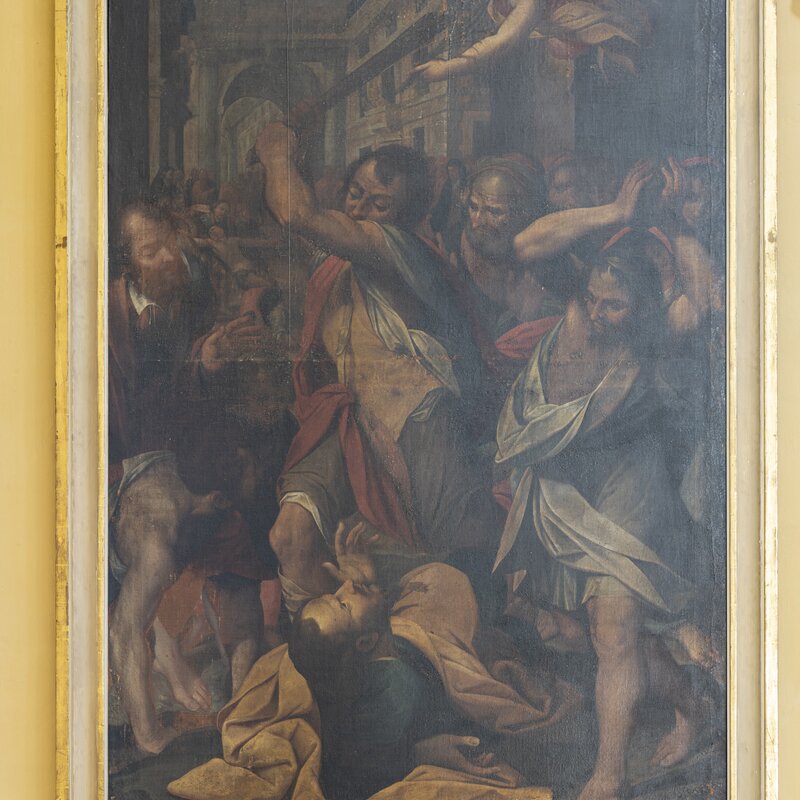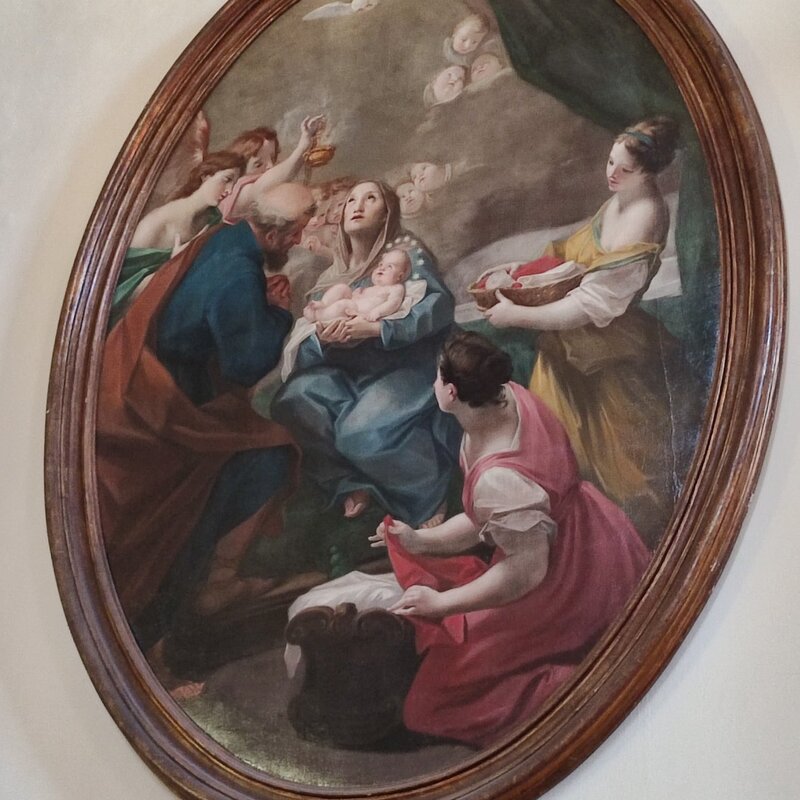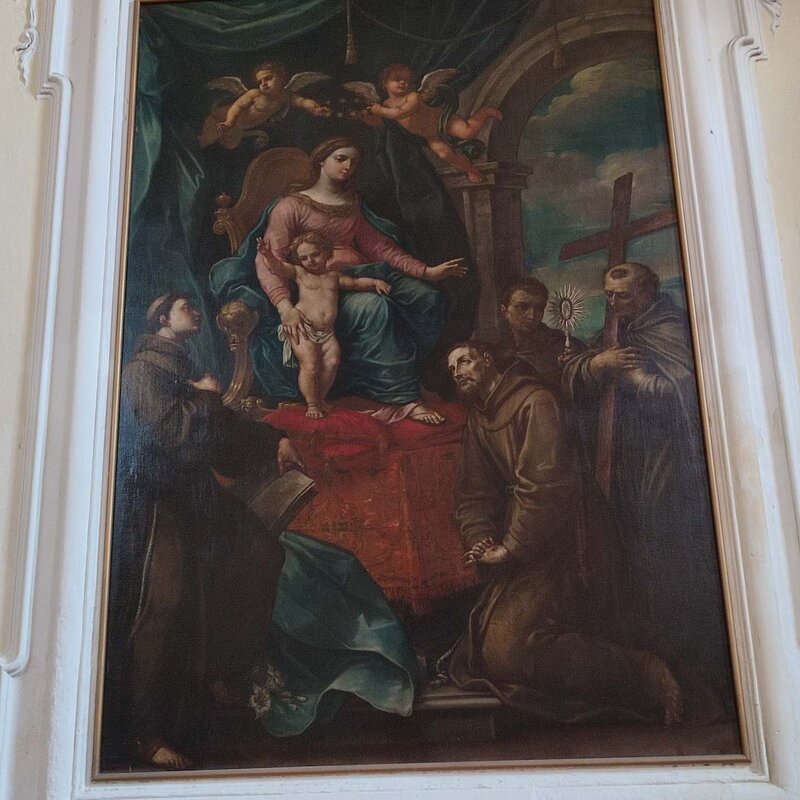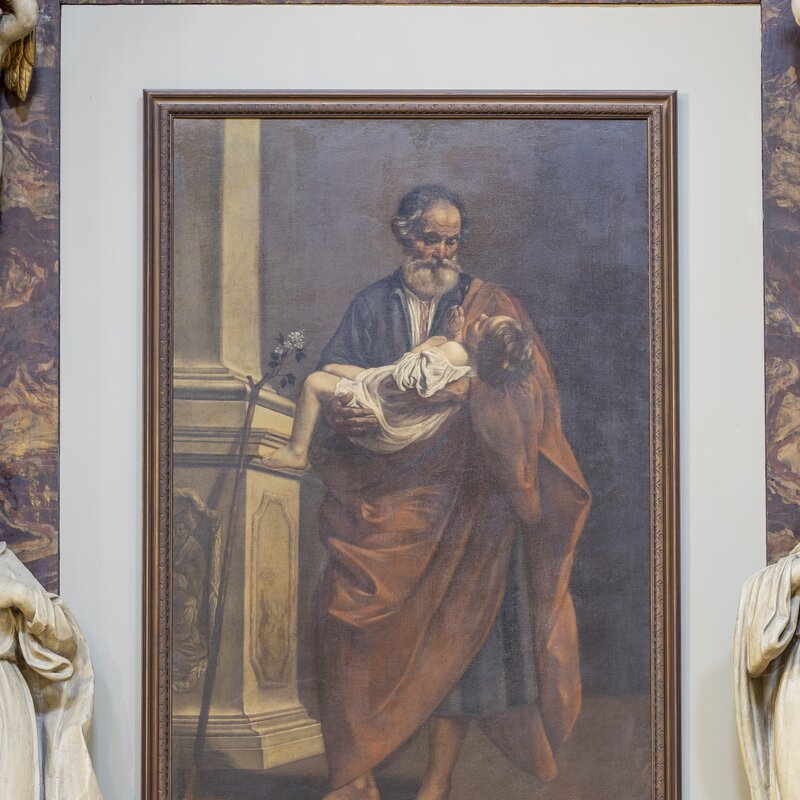Saint Clare of Rimini Receiving Holy Orders
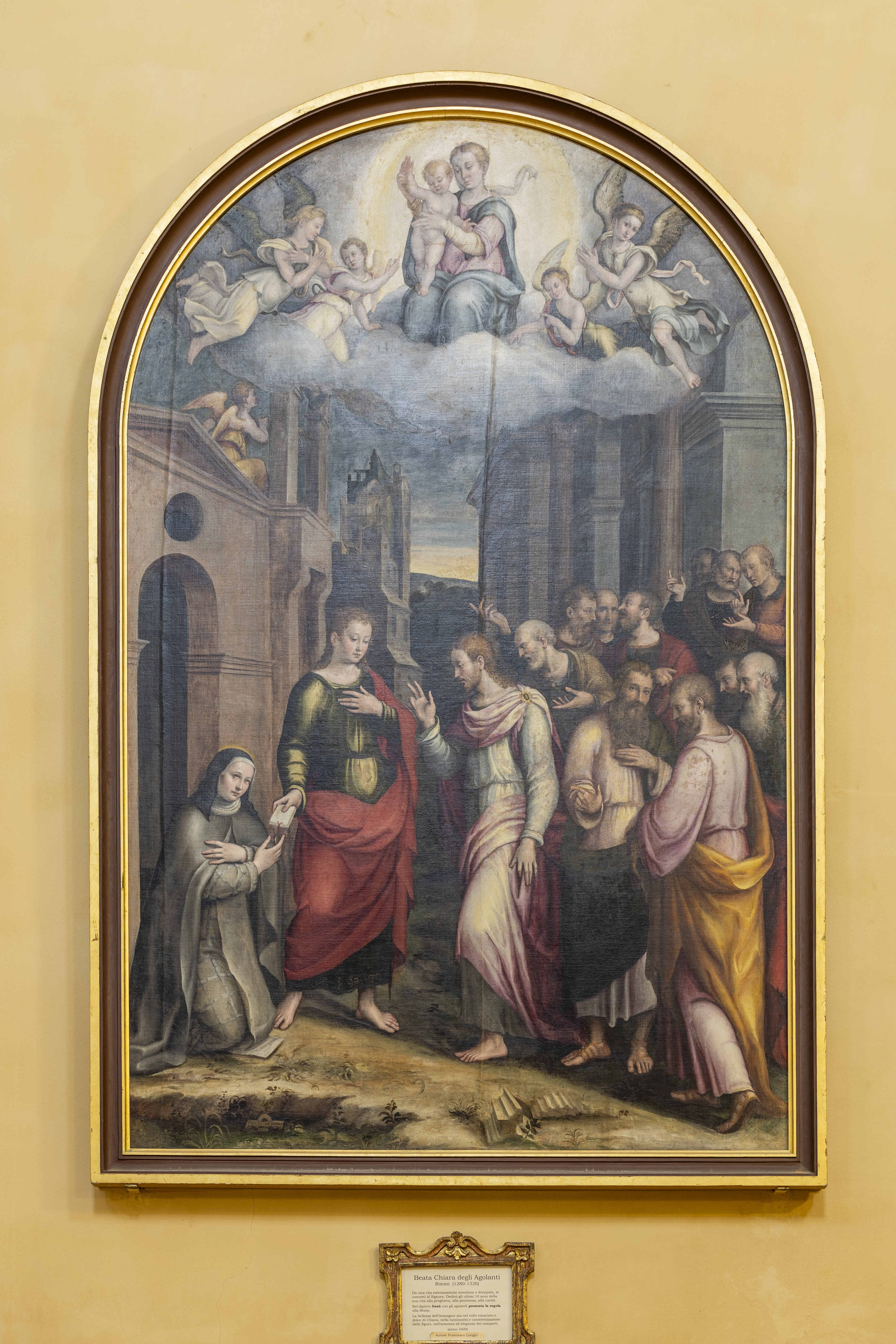
The painting, which today is housed in a wall of the north transept of the co-cathedral and restored by Tilde Di Giacinto and Pietro Tranchina under the supervision of the Bologna, Ferrara, Forlì and Ravenna Cultural Heritage Department, comes from the church of Santa Maria degli Angeli in Rimini, which was closed in 1810 (Gori, 2001).
It was relocated to the church in Cervia at an unknown date. Painted in 1568, it is the début of a young Francesco Longhi (Fabbri, 2007), the brother of Barbera, and the son of noted Ravenna artist Luca, the founder of one of the most important studio of painters in Romagna at the turn of the 17th century.
Although originally the painting was attributed to only Francesco, later contributions from researches have identified the clear contribution of the more experienced Luca in portraying people in the foreground, whilst his son Francesco is thought to have been responsible for the architectural structure in the classical style. Clare of Rimini lived between 1260 and 1326 and was a noble woman from Rimini who is said to have led a dissolute youth.
After significant bereavements in her family, Clare underwent a major conversion and took up religious orders with the Third Franciscan Order before then joining the Poor Clares order. A charismatic figure, she was particularly venerated for her devotion and for her dedication to supporting others. In the painting, the saint is depicted kneeling at the entrance to the convent, opposite a young St John the Evangelist which is clearly the work of the Longhis. St John is handing Clare the holy orders, in the presence of Christ, immortalised in the gesture of blessing. The composition, the statuesque physicality of the figures, the architectural and landscape view which is energetically projected and the soft radiance of the colours are without doubt evidence of Luca and Francesco’s Longhi affiliation to the mannerism of Emilia (particularly Bologna), with influences from Tuscan painting (Bentini, 1985; Viroli, 2000). "
